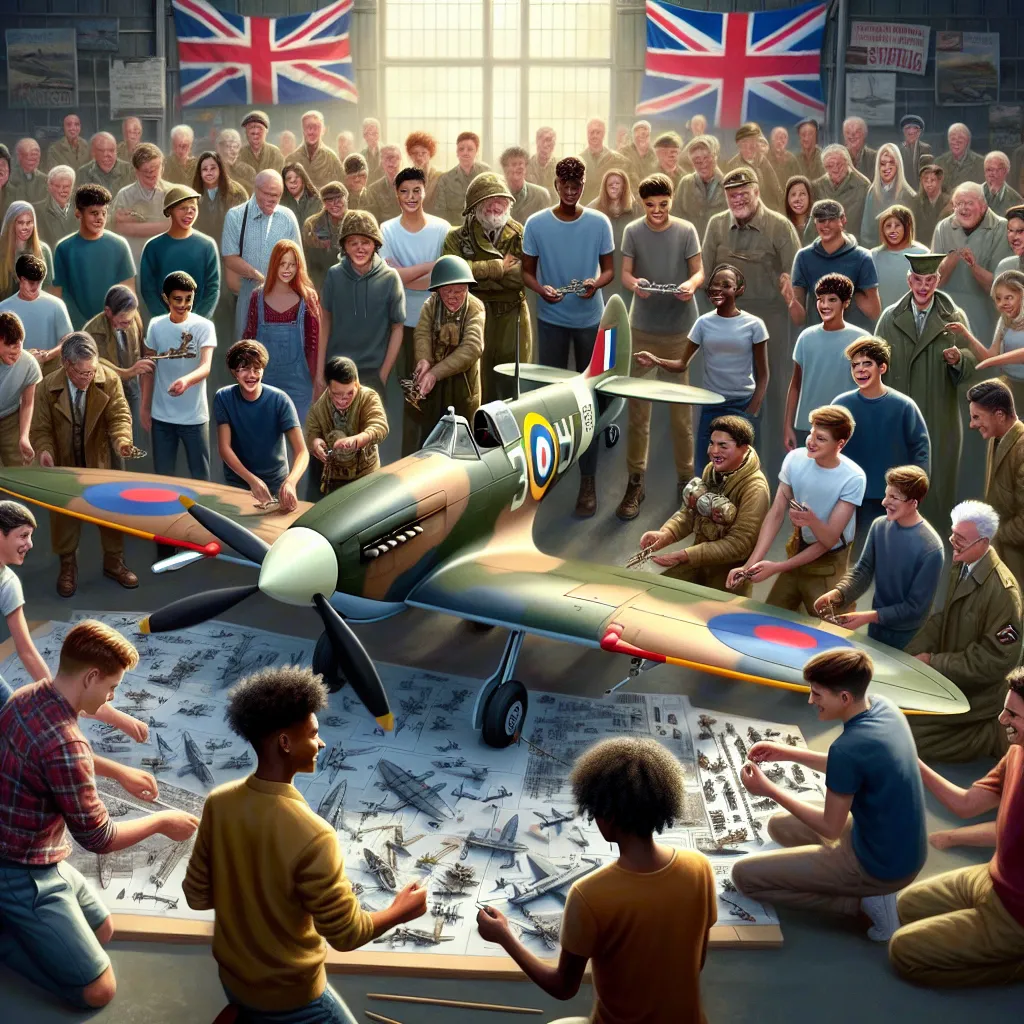Hey there, so you think computer games are the ultimate source of excitement, huh? It might be time to rethink that. Old-school toys still have some magic left in them, and we’re about to prove it by taking a beloved classic and giving it a supersized twist. Buckle up, because we’re diving into the world of Airfix models with a squad of teenagers!
Picture this: a group of teens being handed the task of building a massive, life-sized model airplane. At first, they think it’s old-school and maybe even a bit boring. But once they get their hands dirty, things get really interesting. It’s the ultimate project: constructing the biggest model airplane ever, the legendary Supermarine Spitfire.
When I think back to influential bits of my childhood, aside from my parents and standout teachers, Airfix kits were right up there. I mean, who wouldn’t get excited about creating a miniature world of planes and tanks? It wasn’t just playing; it was a gateway to learning about aviation, military history, technology, and so much more.
Now, let’s face it: in this digital age, getting kids interested in something like model making is no small feat. They’re used to video games and instant gratification. Who has the patience for gluing tiny pieces together? It’s a tough sell but an important one. These models teach patience, focus, and even a bit of history.
So, we roll up at the school with our enormous model kit. The kids are skeptical but curious. This is no regular Airfix model; it’s scaled up to the size of a real airplane. Piece by piece, the teens start to see the challenge and excitement of it. And as they paint, glue, and assemble, something pretty cool happens—they start working together as a team. Even the most skeptical among them is drawn into the project, finding a new appreciation for this old hobby.
The most intense moment came when we had to lift the giant model onto its wheels. Would it hold or collapse? Drumroll…it held! Cheers erupted, and there were smiles all around. The giant Spitfire was ready for its big reveal. The look on the kids’ faces—and on the faces of real war veterans who came to see it—was priceless.
In the end, these teenagers didn’t just build a model; they built memories and learned life skills. They found out that yes, there’s something magical about creating something tangible with your own hands. Maybe they won’t trade their consoles for glue and plastic entirely, but they’ll definitely remember the day they built a full-sized Spitfire.
So, next time you’re thinking about exciting kids’ activities, don’t write off the classics. There’s still a lot of joy, learning, and excitement to be found in something as simple and challenging as an Airfix model kit. Who knows, maybe the spirit of Airfix will fly high for another generation.
[Music]






